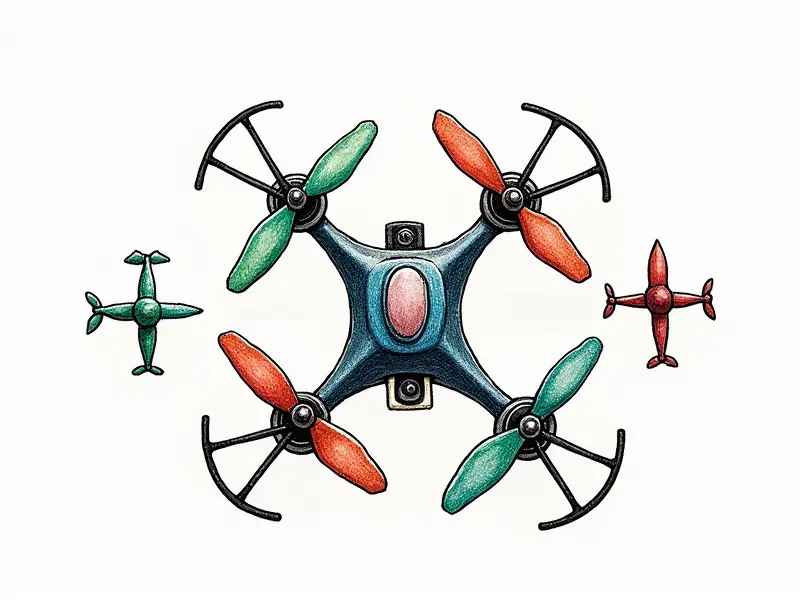Drone autonomous flight modes

Mastering Drone Autonomous Flight Modes
Autonomous flight modes in drones have revolutionized aerial photography and videography, offering users a hands-off approach to capturing stunning images and videos. Understanding how these modes work is crucial for maximizing the capabilities of your drone while ensuring safety and efficiency.
Understanding Drone Autopilot Systems
Drones equipped with autopilot systems utilize advanced technology such as GPS, IMU (Inertial Measurement Unit), and sophisticated algorithms to navigate autonomously. These systems enable drones to follow pre-programmed flight paths, maintain a steady altitude, and even return home automatically if the signal is lost.
Top Drone Autonomous Flight Features
- Waypoint Navigation: Allows users to set multiple waypoints for the drone to visit in sequence, ideal for mapping large areas or creating intricate flight patterns.
- Return-to-Home (RTH): Ensures that if the signal is lost or battery levels are low, the drone will automatically return to its starting point.
- Follow Me Mode: Tracks a moving subject, such as a person or vehicle, allowing for dynamic and engaging footage without manual control.
Maximizing Your Drone's Auto-Flight Capabilities
To get the most out of your drone’s autonomous flight modes, it is essential to familiarize yourself with its specific features and settings. Regularly updating firmware can also enhance performance and add new capabilities.
Best Practices for Drone Autonomous Flights
- Pre-flight Planning: Always plan your route in advance using flight planning software or apps to ensure optimal coverage and efficiency.
- Battery Management: Keep an eye on battery levels during autonomous flights, especially when flying over challenging terrain where a return might be difficult.
- Safety First: Always conduct autonomous flights in accordance with local regulations and guidelines to avoid any legal issues or safety hazards.
Benefits of Using Autonomous Flight in Drones
The benefits of using autonomous flight modes are numerous. They not only save time but also reduce the risk of human error, allowing for more consistent and high-quality footage across a variety of applications such as agriculture, construction, and aerial photography.
Simplifying Drone Autonomy for Beginners
For beginners, mastering drone autonomy can seem daunting. However, with practice and patience, anyone can learn to use these features effectively. Start by experimenting in open spaces before moving on to more complex scenarios.
How to Use Drone Auto-Pilot Effectively
- Familiarize Yourself: Read the user manual thoroughly and understand how each autonomous mode works.
- Test in Safe Environments: Begin by testing autopilot modes in open, obstacle-free areas to build confidence and understanding.
- Utilize Flight Planning Software: Use software like DJI GS Pro or DroneDeploy for detailed mission planning.
Advanced Drone Navigation with Auto-Pilot
For more experienced users, advanced navigation features such as terrain-following and obstacle avoidance can be incredibly useful. These technologies allow drones to navigate complex environments autonomously, ensuring safe and efficient flights.
Exploring Smart Flight Modes in Modern Drones
- Terrain Follow: Keeps the drone at a consistent altitude above ground level, ideal for mapping rugged terrain.
- ActiveTrack: Tracks moving subjects while maintaining a steady distance and orientation, perfect for sports photography or videography.
The Future of Autonomous Drone Flights
The future of autonomous drone flights looks promising with advancements in AI, machine learning, and sensor technology. As these technologies continue to evolve, drones will become even more capable of handling complex tasks autonomously, opening up new possibilities for industries ranging from logistics to environmental monitoring.
Conclusion
Mastery of drone autonomous flight modes can significantly enhance your aerial photography and videography experience. By understanding the technology behind autopilot systems, utilizing top features effectively, and adhering to best practices, you can unlock the full potential of your drone while ensuring safety and efficiency. As we look towards the future, advancements in AI and sensor technologies will continue to push the boundaries of what drones can do autonomously.

